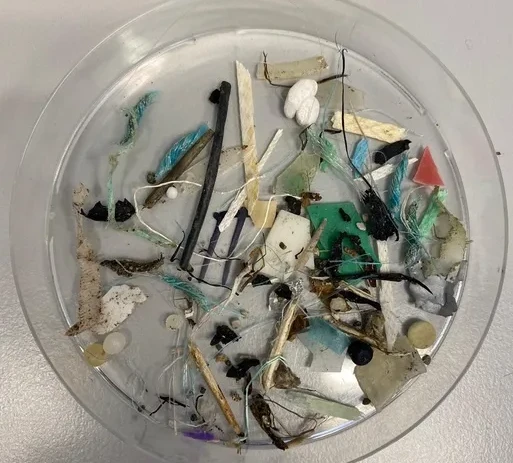Plastic waste littering the Arctic comes to the region from all over the world, and largely from the most affluent and industrialized countries, a team of scientists has shown from evidence collected by numerous tourists.
Researchers from the Alfred Wegener Institute (AWI) at the German Helmholtz Center for Marine and Polar Research have analyzed the origin of this debris from a “citizen science” project involving numerous tourists who arrived in the area on sailing cruise ships and collected plastic samples in the Svalbard archipelago.
This debris was subsequently analyzed at the Alfred Wegener Institute, where scientists found that a third of the debris that retained traces of labels that could identify its origin came from European countries, and in a large part from Germany itself.
The results of this work, which have been published in the journal in the journal Frontiers, have evidenced that even the most industrialized and prosperous countries make very significant contributions to the contamination of remote ecosystems such as the Arctic.
“In 2016 we started working with citizens to investigate the composition of plastic waste on Arctic coasts,” said AWI researcher Melanie Bergmann, who devised this citizen science project together with tour guide and writer Birgit Lutz.
So they set up the project in collaboration with companies offering Arctic trips, and the tourists involved collected plastic debris off the coast of the Norwegian archipelago between 2016 and 2021.
Most of the waste that was found came from fishing, although it was not possible to identify its origin, noted the researchers, who have specified that in cases where it was possible to detect the origin it was found that most of it came from Russia and Norway.
Scientists have found that plastic pollution comes from both local and remote sources; at the local level it reaches the ocean from ships and from Arctic communities with poor waste management systems.
As for the more remote sources, plastic debris and microplastics are transported to the Arctic Ocean from the Atlantic, North Sea and North Pacific by various rivers and ocean currents, and researchers found debris from as far away as Brazil, China or the United States.
This plastic debris poses additional challenges for Arctic ecosystems because they are already overburdened due to climate change, according to the scientists, who have warned that the Arctic is warming at a rate four times the global average.
The results have concluded that even prosperous industrialized countries, which can afford better waste management, contribute significantly to the pollution of remote ecosystems such as the Arctic, and therefore stress the importance of improving local waste management, especially on ships and in fisheries.
The scientists have also stressed the importance of reducing global plastic production, especially in the industrialized countries of Europe, North America and Asia, as approximately 11 percent of global plastic production reaches waterways.

